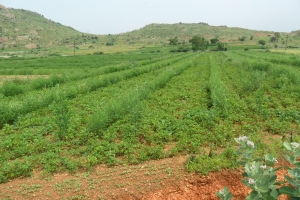Millets have evolved to survive in extremely harsh conditions without any need for human intervention. Some of the millets have been domesticated more (foxtail, pearl, finger, proso, sorghum) than the others (kodo, brown top). But so far, most varieties developed have preserved this characteristic, adapting them to thrive in fairly diverse environments. In the current situation of worsening conditions due to climate change, it is these features that have brought millets back into the focus of researchers and policy makers seeking to develop a more sustainable food system.
Millets being rain fed crops, do not require standing water in their fields, so no need for big dams, forests going under reservoirs and elaborate canal systems to get water to the farms. Millets do not need any fertility enhancement or pesticides to grow well and yield a good harvest. Essentially, the environmental foot print of millets is a tiny fraction of that for paddy or wheat.
Millets are extremely nutritious grains. Their high nutrient content makes them desirable not just to humans, but also to birds and other animals too. The birds have co-evolved with these grains and there fore have beaks adapted to hulling these grains while ruminatory animals such as cattle have a digestive system that can digest the hard cellulosic fibers in their husk. So all the typical by products of processing millets for human consumption gets utilized as an additive to bird and cattle feed.

Millets have also played an important role in nurturing soils and improving their fertility and texture, there by increasing the yield and hence the returns to the farmer. Once the root system is established, millets can survive many dry weeks. Once it starts raining, the plants jump back to life and yeild something by the end of the season. Millets are thus fairly effective at aggregating nutrients and if we conscious in closing the nutrient loop locally, one can realize a manifold increase in soil health.
Millets are thus environmentally, ecologically, economically friendly sources of food and nutrition.


